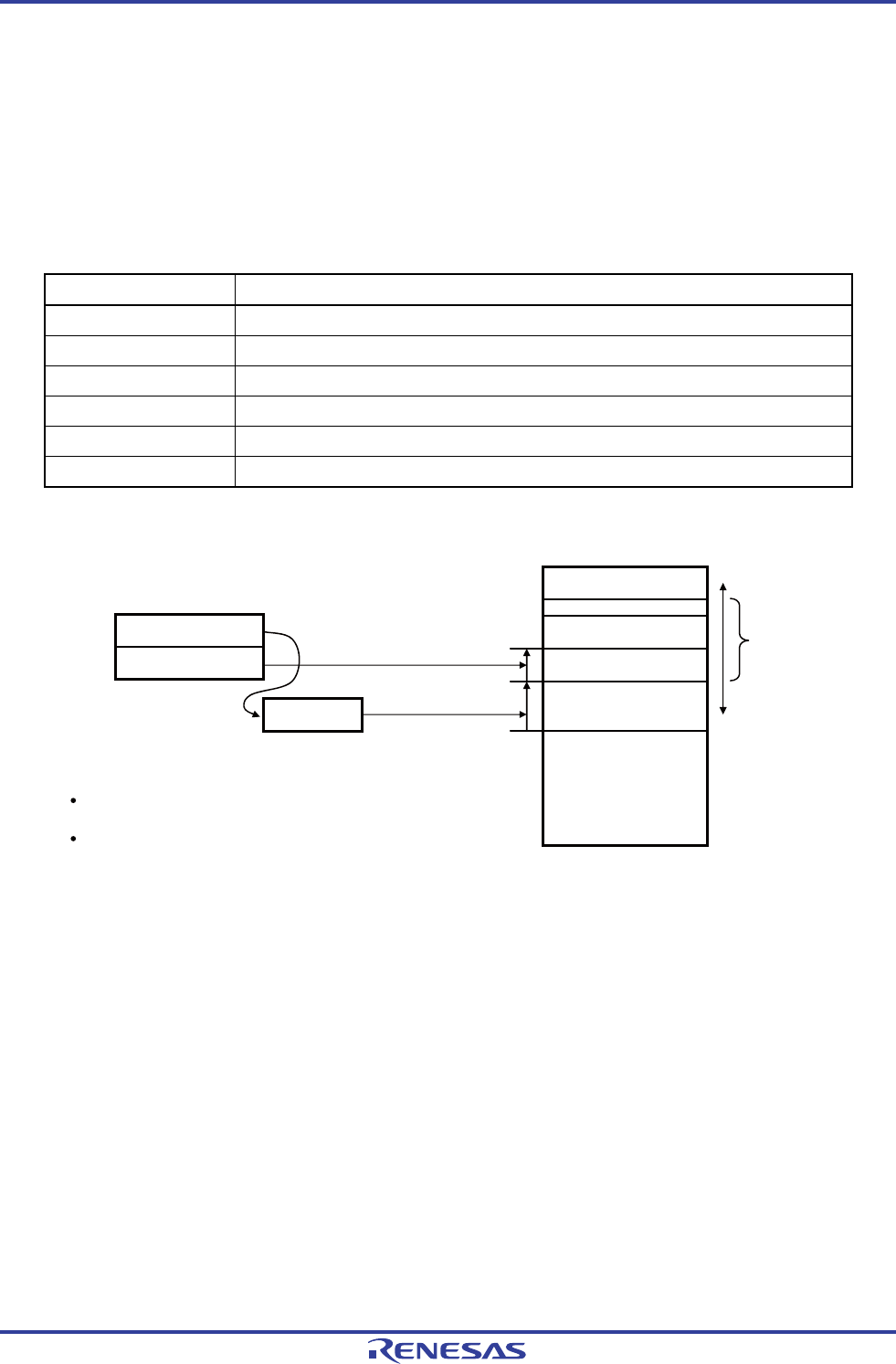
RL78/G1A CHAPTER 3 CPU ARCHITECTURE
R01UH0305EJ0200 Rev.2.00 87
Jul 04, 2013
3.4.7 Based addressing
[Function]
Based addressing uses the contents of a register pair specified with the instruction word or 16-bit immediate data as
a base address, and 8-bit immediate data or 16-bit immediate data as offset data. The sum of these values is used
to specify the target address.
[Operand format]
Identifier Description
−
[HL + byte], [DE + byte], [SP + byte] (only the space from F0000H to FFFFFH is specifiable)
−
word[B], word[C] (only the space from F0000H to FFFFFH is specifiable)
−
word[BC] (only the space from F0000H to FFFFFH is specifiable)
−
ES:[HL + byte], ES:[DE + byte] (higher 4-bit addresses are specified by the ES register)
−
ES:word[B], ES:word[C] (higher 4-bit addresses are specified by the ES register)
−
ES:word[BC] (higher 4-bit addresses are specified by the ES register)
Figure 3-26. Example of [SP+byte]
FFFFFH
F0000H
SP
Target memory
Memory
Offset
Stack area
Specifies a
stack area
Instruction code
<1>
<1>
byte
<2>
<2>
SP (stack pointer) <1> indicates the stack as the
target.
By indicating an offset from the address (top of the
stack) currently pointed to by the stack pointer,
“byte” <2> indicates the target memory (SP + byte).


















